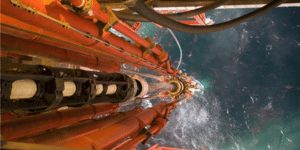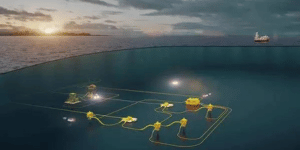
The Scope
A client asked us to design a pair of clamps for two large flexible subsea risers that were to be deployed in the North Sea and pulled into an FPSO.
The clamps were dual purpose, acting as sea fastenings to lash the rigid riser ends to the vessel during transport and lifting aids when the riser was over-boarded. To ensure the design met all the project requirements, the scope of work diversified to include verification of the riser design.
The Solution
We set to work identifying the optimum locations on the 12m long riser ends to attach a clamp. Our team determined the worst case forces the riser end could be subject to during over-boarding using OrcaFlex. The analysis fed into the design process resulting in a pair of half shells that were bolted together around the riser ends by four heavy duty preloaded bolts.
A bespoke set of MathCAD calculations to BS EN ISO 19902:2007 were produced to determine the size and shape of the clamps. Further finite element analysis (FEA) was carried out to check for any stress concentrations and verify the MathCAD calculations.
We quickly assessed the third party project documentation to identify potential issues. We identified the necessity of expanding upon the 2D drawings provided by the client and subsequently produced a detailed 3D CAD model of the riser at each stage of the riser replacement process, to verify the design was fit for purpose.
The 3D modelling identified a clash scenario of a riser with a replacement riser, which could have potentially resulted in the pipe rupturing, structural damage to the FPSO and environmental damage. This worst case scenario would have resulted in huge financial implications.
The Benefits
We estimate that we saved our client approximatley £2.5 million in vessel costs and an estimated further £2 million on potential riser damage.
The client subsequently benefitted from our pragmatic and rigorous approach during the design phase of this project.



